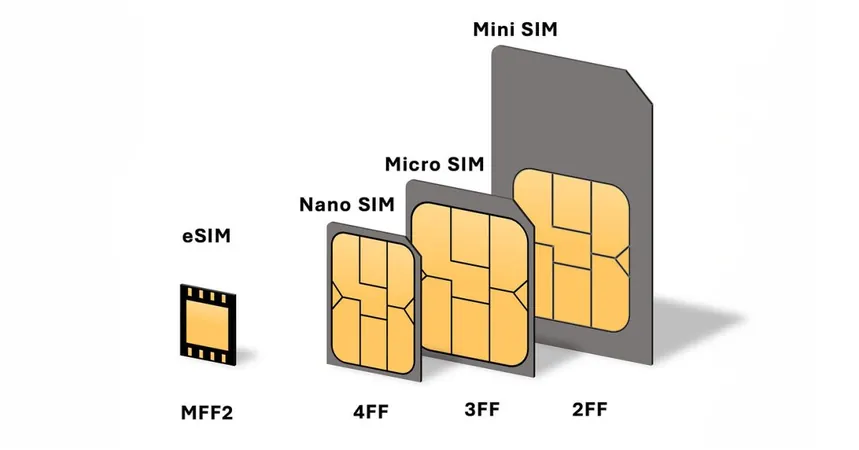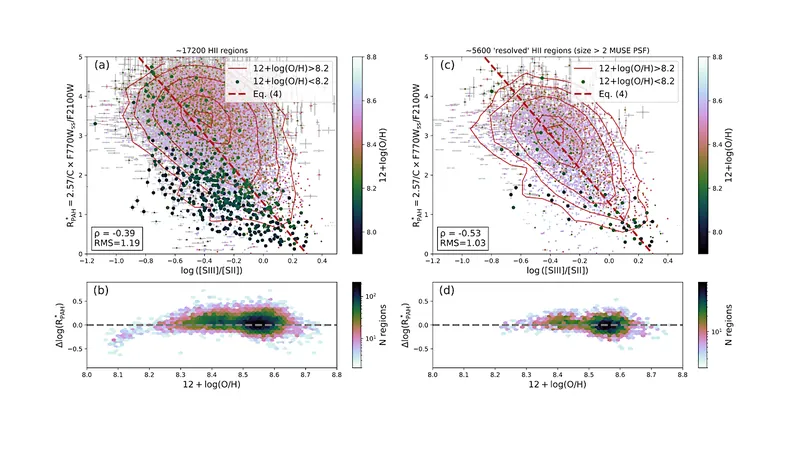
Mysterious Green Glow of Interstellar Comet 3I/ATLAS Leaves Scientists Intrigued
2025-09-19
Author: Sophie
Is Comet 3I/ATLAS Truly Green?
A captivating phenomenon has emerged surrounding interstellar comet 3I/ATLAS, observed during the total lunar eclipse on September 7, 2025. This cosmic visitor seems to have developed a strange green hue, which has piqued the interest of scientists.
The Science Behind the Glow
Typically, comets emit a green glow when they heat up and release vapor, a common occurrence for many celestial bodies in our Solar System. However, 3I/ATLAS seems to be breaking the mold. Current analysis reveals only minimal traces of dicarbon (C2), the usual suspect for a comet's green luminance.
So what's going on? It’s possible that C2 is present but hasn’t been identified yet. Alternatively, there may be another unknown molecule at play, making the comet's chemistry an enigma yet to be solved.
Astrophotography Captures the Comet
Stunning images were captured by astrophotographers Gerald Rhemann and Michael Jäger during the lunar eclipse, showcasing the enigmatic glow of 3I/ATLAS.
Understanding Cometary Chemistry
As comets approach the Sun, the ice surrounding their rocky cores sublimates, creating a gaseous atmosphere or coma. This gas, energized by solar radiation, glows in various wavelengths, including visible light.
Observations from the James Webb Space Telescope (JWST) indicate that 3I/ATLAS has a unique chemical makeup, notably with higher-than-average amounts of carbon dioxide, along with nickel and cyanogen. However, none of these typically cause a green fluorescence.
A Deeper Mystery Unfolds
Adding another layer to this cosmic puzzle, a recent study led by astronomer Luis Salazar Manzano from the University of Michigan reveals a concerning depletion of carbon-chain molecules, including C2 and C3, in this comet.
Their findings suggest that 3I/ATLAS may be one of the most carbon-chain depleted comets ever observed. Why is it emitting a glow without the necessary molecules? This opens new avenues for exploration.
Looking Ahead to December
As 3I/ATLAS prepares for its closest approach to Earth this December, astronomers are eager for more data to unravel the mysteries that surround this intriguing interstellar visitor. Will we uncover the secrets of its luminous green glow? Only time will tell!









 Brasil (PT)
Brasil (PT)
 Canada (EN)
Canada (EN)
 Chile (ES)
Chile (ES)
 Česko (CS)
Česko (CS)
 대한민국 (KO)
대한민국 (KO)
 España (ES)
España (ES)
 France (FR)
France (FR)
 Hong Kong (EN)
Hong Kong (EN)
 Italia (IT)
Italia (IT)
 日本 (JA)
日本 (JA)
 Magyarország (HU)
Magyarország (HU)
 Norge (NO)
Norge (NO)
 Polska (PL)
Polska (PL)
 Schweiz (DE)
Schweiz (DE)
 Singapore (EN)
Singapore (EN)
 Sverige (SV)
Sverige (SV)
 Suomi (FI)
Suomi (FI)
 Türkiye (TR)
Türkiye (TR)
 الإمارات العربية المتحدة (AR)
الإمارات العربية المتحدة (AR)